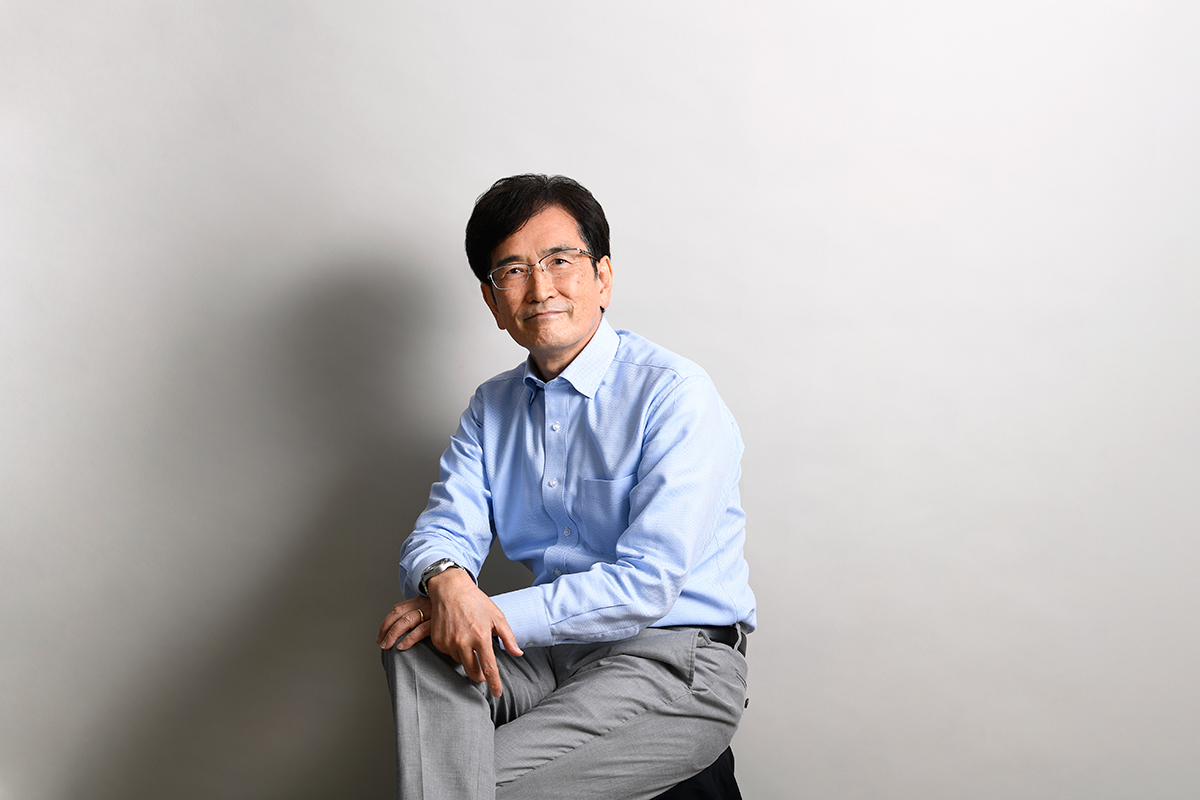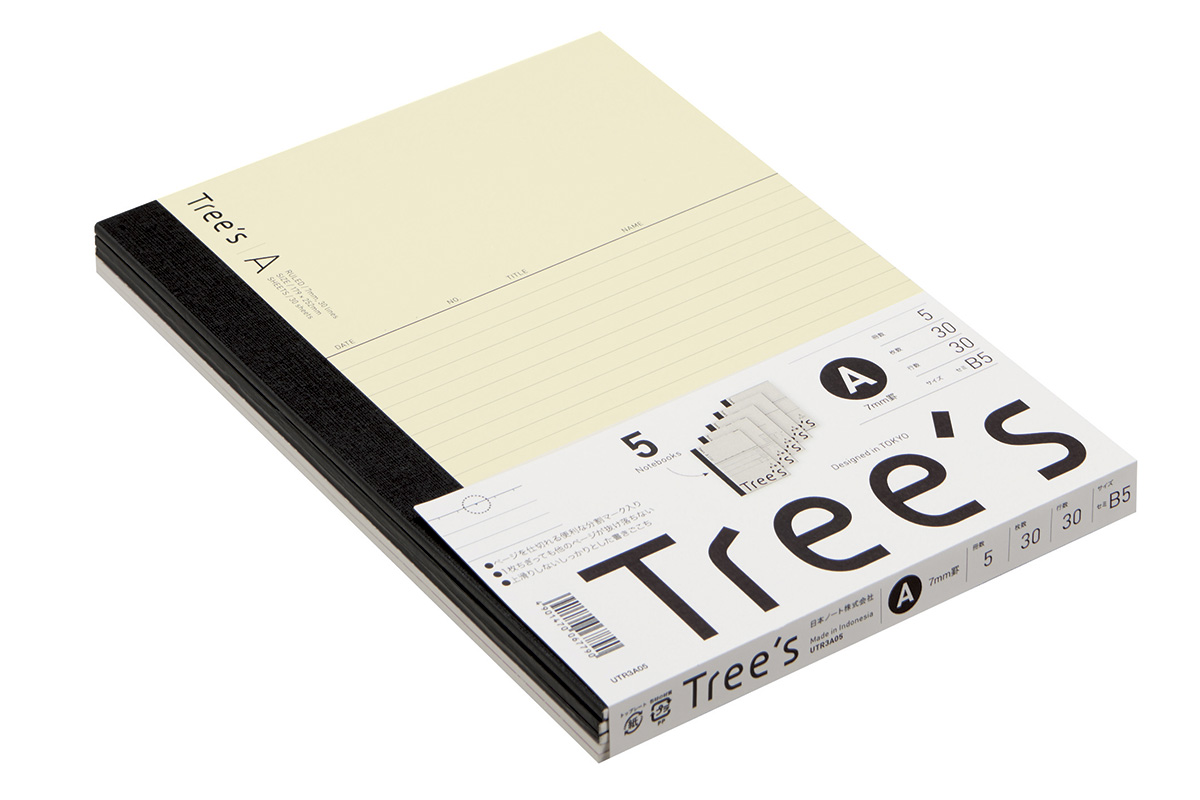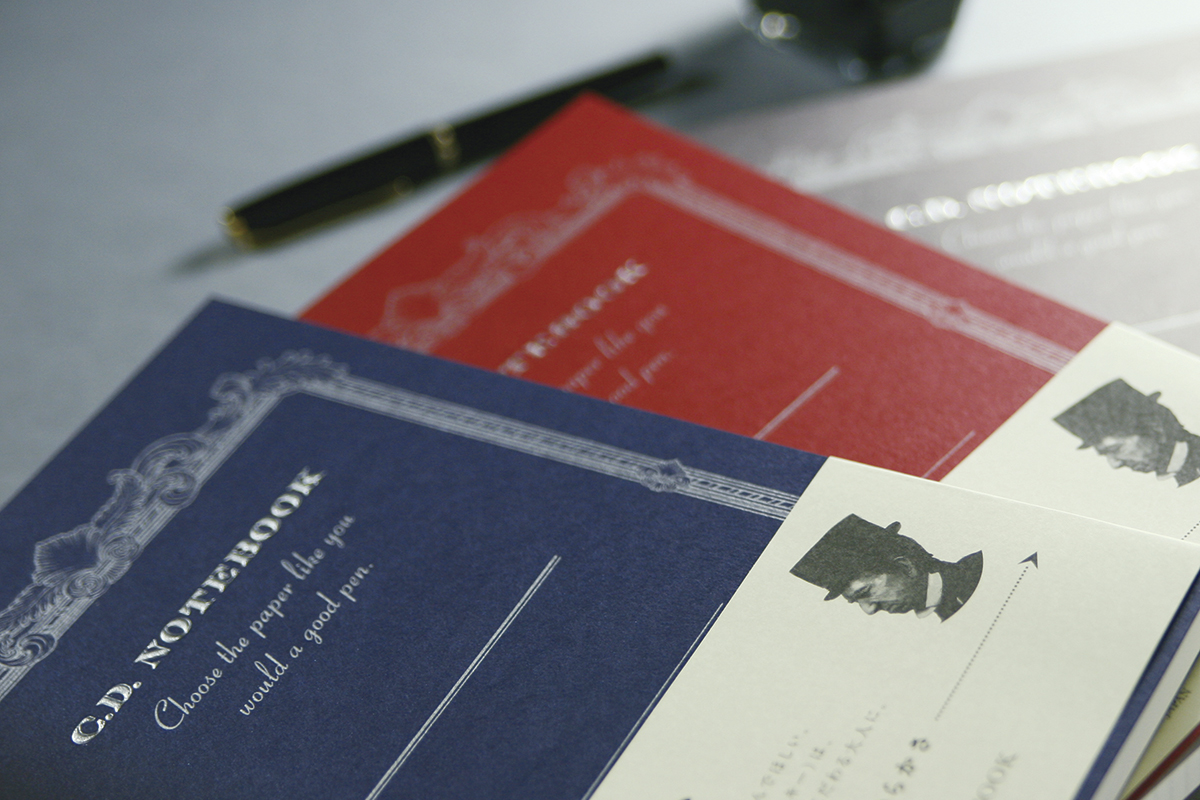Exploring the Strengths of Nippon Notebook Corporation and its Sustainable Expansion Strategies

All across the West, there are dedicated stores for Japanese pens and notebooks, so we are curious to hear your thoughts on why you think this is. What are the core competencies and strengths of Japanese stationery makers like yourselves that make Japanese products so attractive and competitive when compared to their international counterparts?
First of all, I think that Japanese people are stationary lovers, and in terms of national characteristics I would say that Japanese people are the number one stationary lovers in the world. There are so many dedicated or special stores here in Japan for pens, paper, and notebooks. Japanese people really love things that are cute or adorable. When it comes to stationary there are so many varieties of designs as well as price points.
In regard to our strengths, our collaboration with Oji Paper has secured us high-quality Japanese paper. You might have heard of neutral paper, a kind of paper that will remain the same quality and not yellow over time. With this paper we have a slogan that states, “1000-year paper,” and that means that the paper can stay the same quality without changing for 1000 years. Our company has combined our unique paper-related manufacturing technologies with actual paper manufacturing companies to achieve a certain level of high quality through countless research projects. Based on this research and technology we have manufactured notebooks and other items for a long time now. I believe our strength has come from our experience and knowledge gained through our repeated collaborations.
The way that people are learning is changing these days and the rate of digitalization has really accelerated in the last few decades alone. In almost every classroom you see tablets and computers. Even in places like Cambridge University, exams are conducted digitally and we are seeing some call into question the relevancy of using a notebook or physical paper. What impact have these changes had on your own business and do you believe there will always be a place for handwritten notes in work and learning?
It is a good question and one that makes me nervous. In regard to digitalization, we are seeing two major trends. One is ICT education and the other is the declining birth rate. It is a proven fact that there is a decline in note-taking using paper and pen, but as we sit here in this room everyone is currently taking handwritten notes. I do believe that digitalization is increasing, especially in the education space as well as selected workplaces. Despite these trends, I really believe that note-taking will continue to be an essential tool for countless people in their daily lives. I think the saying, “The pen is mightier than the sword,” still rings very true even in 2023. In fact, in my opinion, the pen is mightier than the keyboard.
A US scholar wrote a research paper around 10 years ago about the digitalization trends we are seeing now. They predicted that meeting minutes and interview transcripts would be written on computers or PCs, but we still see those kinds of transcriptions and notes being handwritten as the concise and quick manner is important in preserving the meaning of the transcript. The best way to convey understanding from one person to another is still writing and remembering.
In particular, we are seeing a crisis in countries like Japan and China that use calligraphy for characters such as kanji. Nowadays some people do not know how to write kanji which is a worrying trend. Additionally, in English education, children in Japan start learning the language around the third grade, and when it comes to English, spelling is a skill that requires learners to write things down to remember them. In the education space, I believe a hybrid approach is needed to maximize our children's education moving forward. It means that even though we may utilize digital tools for many tasks, writing and note-taking won’t go away.
It is important to remember that writing and memorizing things has been an educational tool for hundreds of years, and it acts as a way of activating the brain functions of learners. The media of writing things such as pens, pencils, and notebooks will continue to be indispensable tools to learners all across the world.
Of course, because of the declining population in Japan, we may face a situation where the volume of those items will be reduced, however, the potential market for these items will remain even if volume domestically dips.
I think people will be encouraged to keep writing by hand if the tools they are using feel good. There is a joy associated with the physical act of note-taking and many countries outside of Japan have an appetite for quality equipment. You just mentioned the aging population, and obviously, that is going to be a consistent problem for the Japanese market. Are you interested in compensating for a shrinking Japanese market by offering these tools to overseas markets as well?
Before answering the question I would like to offer some comments regarding handwriting in the education space, especially about English education. We are seeing now that even Japanese people’s handwriting lacks quality and these days we still need to sign our names when doing things such as checking into a hotel. Poor handwriting quality is a concern, especially for school teachers.
Back to your question, if we are talking about international expansion I would also like to talk about the domestic market as well. Notebooks are a major item in our product portfolio but we also have a senior-related domain of the market. Baby boomers are around the age of 75 right now, and the number of baby boomers is over 2 times the amount of children in Japan. When we think about those senior people they always write things down on paper. We are trying to develop notebooks that target this age bracket, especially domestically.
One more aspect we can consider for the domestic market right now is inbound needs. The world is currently settling down after the effects of the COVID-19 pandemic and we have seen many foreign visitors coming back to Japan over the past year. Japanese-made notebooks are an excellent souvenir and we are seeing a need for this kind of product. We would like to sell to these kinds of customers and to do so we are marketing Japanese patterned designs that appeal to those looking for souvenirs.
In Japan, we had a factory in Hirakata but in 2021 we closed that factory. Instead, we switched our production overseas and opened a factory in Vietnam. When I assumed the post of president, Nippon Notebook was a subsidiary of a company called Plus, and in 2019 there was a decision to merge the two notebook maker companies i.e. Kyokuto/Apica into one.
When I look back at that time, the biggest mission I was given was generating synergy by consolidating two companies into one. Post-merger integration was a key part of my responsibilities, so after the merger I started seriously considering product portfolio integration and abolition. I also needed to consider our sales channels, logistics, and distribution centers. That was when the decision was made to consolidate two existing factories into one with a focus on our factory in Vietnam. Through this, I created a restructuring plan and we’ve now reached this point.
You might be asking why we decided to focus on Vietnam and establish our factory there. I have a background in Vietnam and lived there for nine years, starting in 2011 and returning to Japan in 2020. Based on my personal experiences I quickly decided that we should establish a factory in Vietnam to reduce costs. We also thought about selling products we produce in Vietnam to neighboring Asian countries including Vietnam itself.
In your question earlier you alluded to the fact that the domestic market is shrinking, but in Asia in general we see that people tend to spend a significant portion of their salaries on their children’s education. We believe that Asia is going to grow as a market in the future and we want to be contributing to the cultivation of that market. For that reason we selected Vietnam and it is why we believe it is the best location we can have for a business like ours. With only a single-hour flight we can access almost all ASEAN countries as well as access further away countries using Vietnam’s ports. By sea, products can reach Japan from Vietnam in only 1 week.
We are curious to understand a little more about how the role of partnerships can help you cultivate the market you’ve mentioned. Are you currently seeking opportunities to partner with international companies or agencies?
In 2017 our parent company, Plus Corporation purchased a 67% stake in APP Sinar Mas, Indonesia, and continues to be a stakeholder to this day. Our company has a wide variety of different notebook series and one I would like to talk about is the Tree’s Notebook series. APP’s planted trees are used to manufacture the paper for most of this series of notebooks.
These trees aren’t naturally occurring acacia trees and the trees themselves tend to grow around 10 meters high in about 4-6 years. Once a tree hits the required height we cut it down, process it, and make pulp from it before planting a new tree. The manufactured notebooks are made using paper made from these acacia trees. What we have tried to do with this series is link the story of the acacia trees growing quickly from small roots to the way children grow to do amazing things when natured and cared for.

In terms of overseas partnerships, we have help from APP for log production as well as assistance for sales from Plus Vietnam. With the support we are getting from the group we are selling our products well. In addition, Plus Corporation has six subsidiaries in the United States, Germany, Taiwan, Vietnam, and 2 locations in China. Using this sales network we can export our products to those locations.
As a company that’s main product is paper-based, sustainability must be an important aspect to think about. Earlier we discussed the switch from physical to digital, and one of the biggest voices pushing for that switch is for the preservation of trees and the environment. The Tree’s Notebook series seems to be a very good way of meeting that criticism and your company has a long history of recycling technologies. You talked about planting trees to use their material in your production. Do you have this framework in place in your Vietnamese factory to source materials responsibly and sustainably?
In regards to overseas factories, we have a basic flaw right now because Japanese-made paper is exported to Vietnam, and then after manufacturing the notebooks in Vietnam, they are then exported back to Japan. Production is the only aspect covered by our Vietnamese factory with everything else centered around Japan. Shortly, we think that APP Indonesia will be utilized for planting trees for paper manufacturing. The plan is to then ship the paper to Vietnam and then the final products will be shipped to local Asian countries. When it comes to Japanese-made paper, the cost is high, so the plan is to utilize these Indonesian trees to provide cheaper products for the Asian market.
Imagine that we come back and have this interview all over again in 6 years time to celebrate the 10th anniversary of Nippon Notebook. What kinds of goals or dreams would you like to have achieved by the time we come back for that new interview?
From a global perspective, I think that the needs of children for learning and studying will be increased further, and in particular, I think Asia will see the most because the population in those areas is increasing rather than decreasing. I would like those children to utilize Japanese-made study notebooks. For adult learners, our company has a high-quality neutral paper product line called Premium C.D. Notebook, and this product line has been well received in the West. It is a high-end product line that is designed for Western markets. To summarize, for the low-end, we would like to focus on children because I believe that children around the world can utilize Japanese-made notebooks. For the high-end, we would like to focus on adult-oriented notebooks and stationery. My dream is to spread our good products all around the globe.

Premium C.D. Notebook series
0 COMMENTS